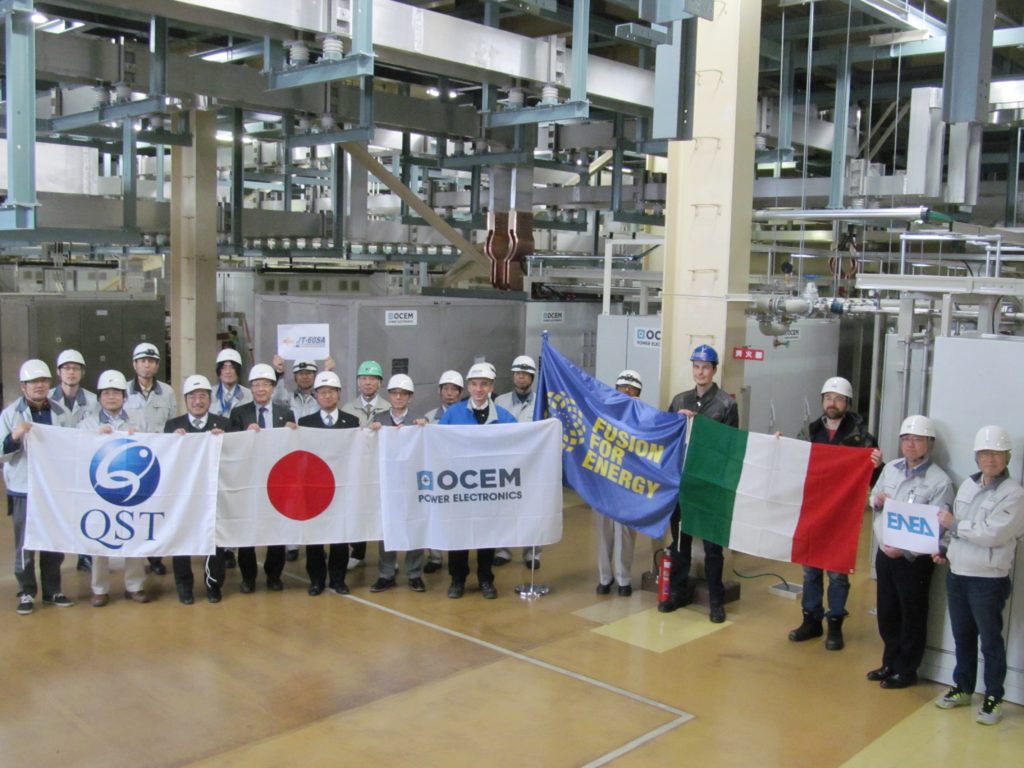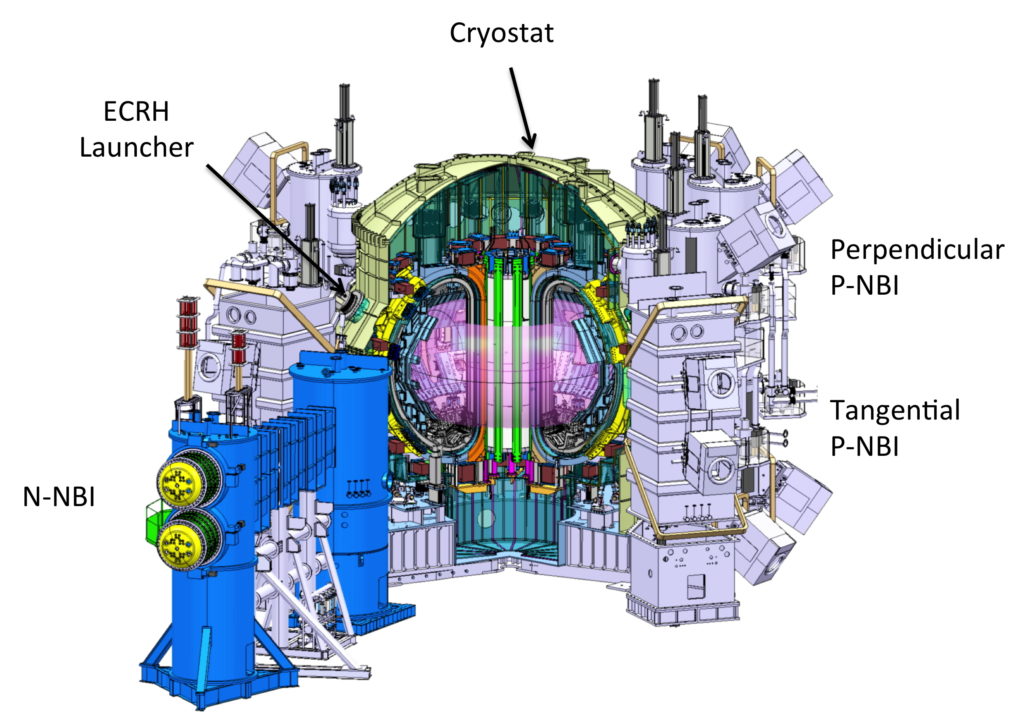Four switching network units (SNU) were supplied to the JT-60SA fusion reactor in Naka
OCEM Power Electronics has finished commissioning and site acceptance tests for a set of components supplied to a newly updated tokamak reactor under construction in Japan that will help develop fusion as a safe, abundant energy source with low environmental impact.
The Switching Network Units (SNU) supplied by OCEM will produce the high voltage needed for plasma initiation in the JT-60SA, or Japan Torus 60 Super Advanced reactor, which is scheduled to be completed in 2018.
The SNU underwent a rigorous design and testing process in both Italy and Japan, and finally last month commissioning and site acceptance tests were completed at the JT-60SA facility in Naka according to schedule.
Now the systems will become part of a collaboration between the Japanese and European fusion research communities; the JT-60SA was designed to support the International Thermonuclear Experimental Reactor (ITER) under construction in Cadarache, France.
Above: a rendering of the JT-60SA
Fusion is achieved by heating subatomic particles until they enter an electrically charged state called plasma. The particles then fuse to form a heavier nucleus, and the reaction produces a large amount of energy that can then be converted to electricity.
JT-60SA uses an advanced reactor called a tokamak: a toroidal, or doughnut-shaped, chamber that holds the plasma using magnetic fields. The plasma is heated until fusion occurs, with a central solenoid coil providing the inductive flux to ramp up the plasma current and contributing to plasma shaping.
The JT-60SA’s central solenoid coil is divided into four superconducting modules called CS 1-4. Each of these is connected to an independent power supply circuit that includes a four-quadrant AC/DC converter as well as a SNU, which is used to produce the high voltage required for the plasma initiation.
As a result, the SNU that OCEM supplied will serve as a critical component of the reactor. They also represent a novel system due to the division of the solenoid coil into four sections.
Each SNU must interrupt a direct current of up to 20 kA in less than 1 millisecond in order to produce a voltage of up to 5 kV. Since the central solenoid is segmented into four sections, the intervention must occur simultaneously in all four SNUs. This means the maximum main switch opening and closing times must be less than 1 ms each.
OCEM was able to successfully meet these design challenges thanks to its 40-plus years of experience producing power systems for fusion energy research initiatives.
The company also produced components for ITER, JT-60SA’s companion project. The JT-60SA was designed to support ITER’s research aims by developing and testing practical, reliable plasma control schemes that can be incorporated into future power plants.
OCEM Power Electronics
Since 1943

